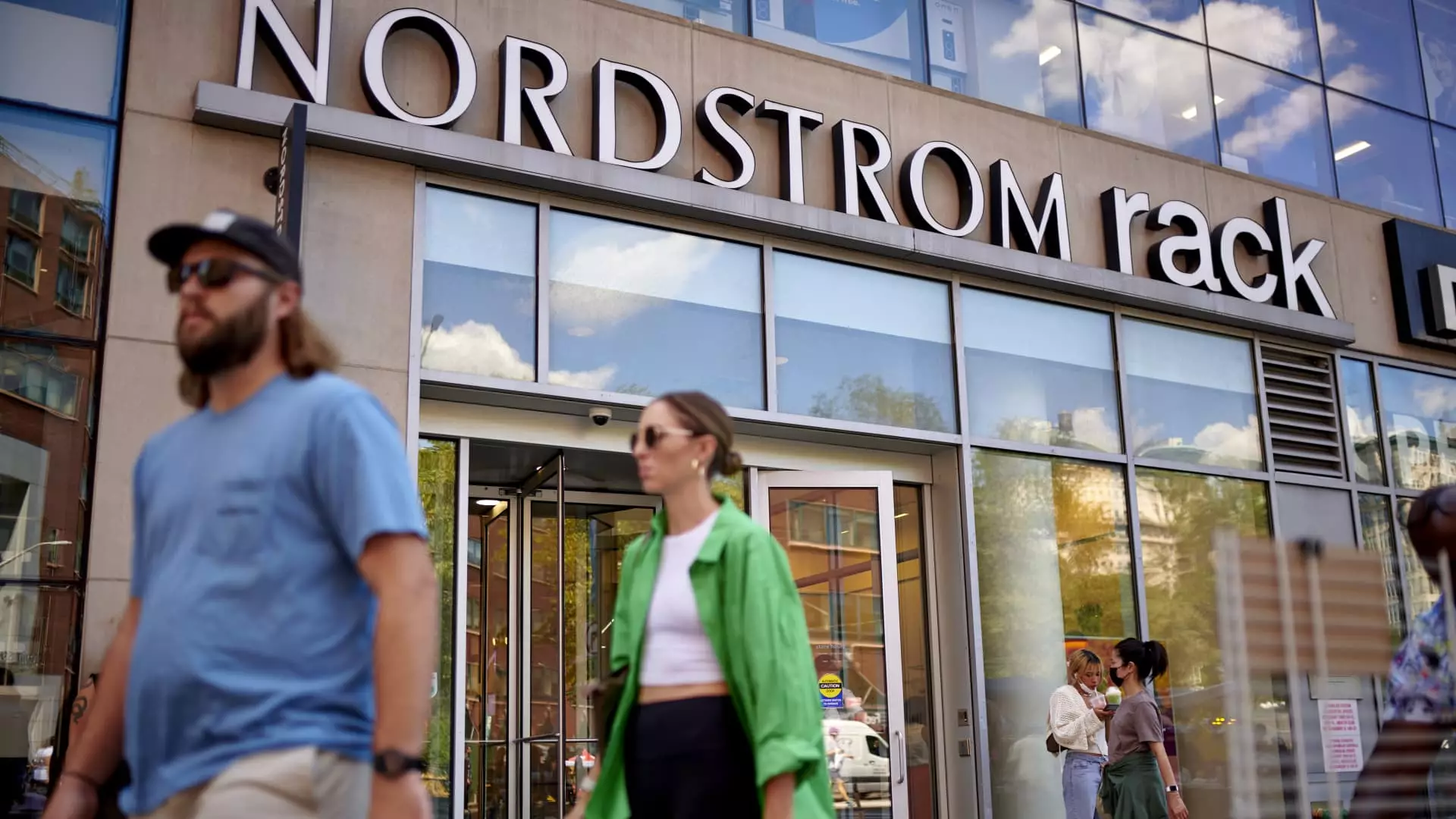On Tuesday, Nordstrom, the renowned Seattle-based department store chain, unveiled its latest earnings report, exceeding Wall Street’s projections. The retailer showcased an earnings per share figure that surpassed expectations by 25 cents, signaling effective strides in cost-cutting measures and operational efficiencies. However, despite these impressive figures, Nordstrom’s outlook for the future was notably conservative. Management provided updated guidance, predicting adjusted earnings per share to land between $1.75 and $2.05, a slight upward revision from the previous $1.65 to $2.05 range. This cautious tone echoes the broader retail environment, where consumer spending is influenced by persistent inflationary pressures and increased interest rates.
Erik Nordstrom, the CEO of the company, struck a balanced tone during his commentary on the earnings call. He expressed optimism regarding the company’s second-quarter performance, highlighting the sustained momentum in revenue across various brand segments and ongoing improvements in gross margins. “We’re confident in our outlook for the remainder of the year and look forward to sustaining the momentum we’ve built,” Nordstrom stated. The positive sentiment was reflected in the post-earnings trading, where shares experienced a notable bump of approximately 5%. Yet, it is essential to note that this exuberance must be tempered with the realities of a mutable retail environment, where consumer behavior is in constant flux.
The Numbers: A Closer Look at Performance
In the second fiscal quarter that concluded on August 3, Nordstrom reported a net income of $122 million, translating to 72 cents per share, down from $137 million, or 84 cents per share from the same period in the previous year. Adjusting for one-time impacts associated with supply chain disruptions, the retail giant’s earnings stand at 96 cents per share, surpassing analysts’ expectations of 71 cents. However, revenue levels of $3.89 billion fell just short of the anticipated $3.90 billion, reflecting a complex narrative. While sales saw an increase of roughly 3.4% from last year, comparable sales only grew by 1.9%, suggesting that while the company is making progress, it is not yet fully capitalizing on the existing consumer market.
In the battle against declining discretionary spending, Nordstrom is increasingly focused on optimizing its operations. Over the past several quarters, initiatives to streamline the supply chain have garnered attention. Notably, the time taken for online order deliveries has improved by over 5%, enhancing customer experience. Furthermore, Nordstrom has restructured the flow of merchandise, aiming to convert sales while simultaneously lowering return rates. These efforts underline a broader industry trend, where retailers are working hard to bolster profits against the backdrop of economic uncertainty.
Another interesting angle in Nordstrom’s strategy is the investment in its off-price division, Nordstrom Rack. The results for this sector have been promising, with an 8.8% revenue increase during the last quarter and comparable sales rising by 4.1%. In contrast, the mainline Nordstrom brand saw a modest 0.9% rise in both net and comparable sales. The focus on expanding the Nordstrom Rack footprint—11 new locations already opened this fiscal year, with a goal of at least 22—reflects a strategic pivot to capitalize on the growing popularity of off-price retailing. This sector has gained significant traction as consumers increasingly seek budget-friendly options amidst current economic challenges.
Despite the strides made in recent quarters, competition looms large in the department store arena, especially from established off-price retailers like TJX Companies, which owns TJ Maxx and Marshall’s. To counter this competition, Nordstrom is not just increasing the number of Rack stores, but also focusing on securing partnerships with well-known brands and attracting talent from the off-price sector. However, whether these measures can substantiate sustained growth remains to be seen, particularly in a retail landscape facing immense pressure from fluctuating consumer sentiment and economic headwinds.
While Nordstrom’s recent earnings illustrate a company persevering through challenges with some success, the cautious outlook highlights the uncertainty inherent in the current retail environment. The balance between optimism and caution will be paramount as the company navigates the second half of the year, striving to maintain its footing in an increasingly competitive market.


Leave a Reply